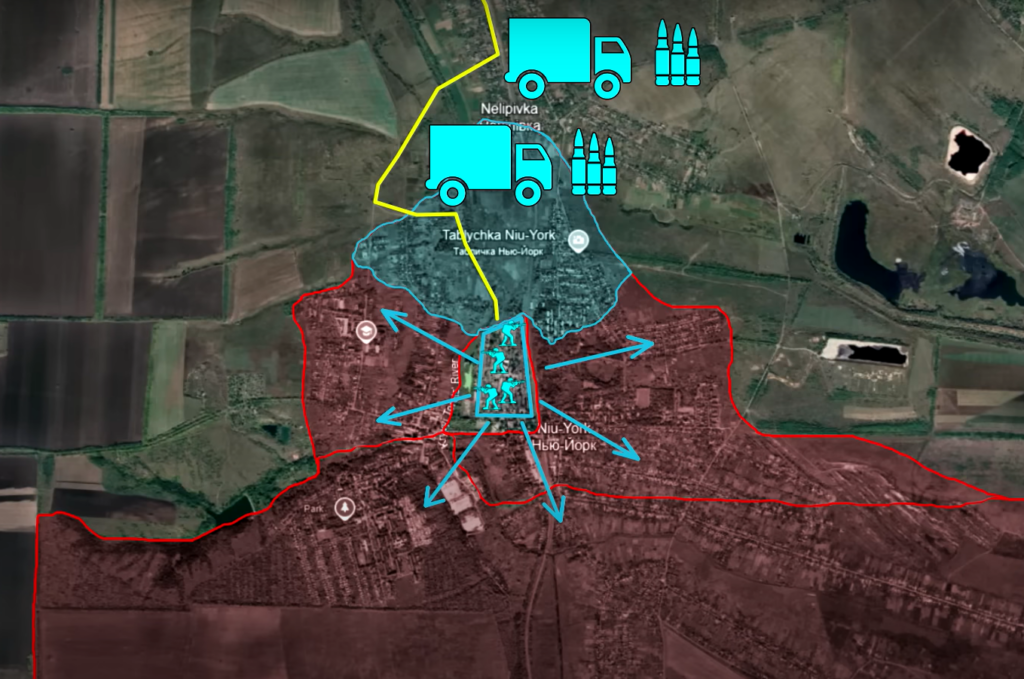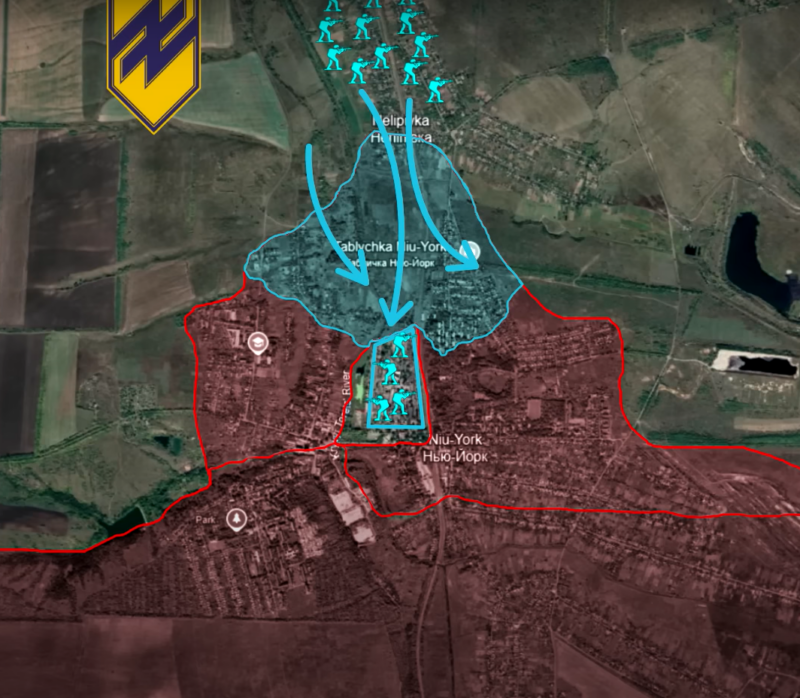Frontline report: Ukraine’s unexpected assault turns the tide in Toretsk
In a bold counterattack, Ukraine's elite Azov Brigade breaks the siege and shifts the momentum near Toretsk — the key stronghold in the Russian push for Donetsk Oblast.


9 September. Today, there are a lot of updates from the Toretsk direction in Donetsk Oblast.

The Russians have made significant progress in the fight for New York, placing Ukrainian defenders under siege at a local chemical factory. In response, the Ukrainian command deployed the elite 12th Special Purpose Azov Brigade, resulting in the liberation of the most fortified part of the city.
Russian advance and Ukrainian encirclement in New York
Previously, Russian forces seized control of the high-rise district in the western part of the city, an important gain due to the nature of the terrain. The remaining areas under Ukrainian control consist of small residential houses around the industrial zone. The high-rises equipped the Russian servicemen with a commanding view and fire control over the low-lying residential areas, tipping the scales against Ukrainian forces.

The scarce fortified defenses in the residential sector pushed Ukrainian forces to dig in at their only remaining stronghold—the heavily fortified chemical plant. The Russians advanced effectively by leveraging their fire control and observation points from the high-rises, coupled with numerical superiority and heavy firepower, to push the Ukrainian troops back toward the chemical plant.
However, their momentum was short-lived as Ukrainian forces quickly fortified their positions around the industrial zone, putting the brakes on the Russian advance just outside the plant. The Ukrainians utilized the plant’s strong defensive structures to fend off the Russian assault, preventing further Russian advance into the industrial sector.
Strategic advantages of besieged chemical plant
The New York chemical plant offers formidable defensive advantages:
• high resistance to artillery and airstrikes is afforded by the plant’s high-rise factory buildings, constructed from concrete and reinforced materials;
• valuable observation points provided by the factory’s structures allow Ukrainian forces to disrupt assaults with precision fire;
• underground bunkers, likely a feature of the factory due to its economic importance in the Soviet era, provide cover from airstrikes and add another layer of defense.

The terrain surrounding the plant strengthens its defensive position even further:
• to the west, a river and a large pond create natural barriers that slow down any Russian assault, leaving advancing forces vulnerable to concentrated Ukrainian fire as they attempt to cross;
• to the east, lies a vast open area near railway tracks, where any Russian assault units would be exposed to Ukrainian fire from well-defended positions.
These geographic features significantly bolster the Ukrainian strategy, creating choke points and giving encircled troops the upper hand in the industrial zone.
Azov’s game-changing counterattack
The Russians decided to play the waiting game, avoiding direct assaults and instead aiming to cut off Ukrainian supplies and starve them into submission. The Ukrainian command saw through the ploy, and deployed the elite Azov Brigade to break through the siege and shore up the supply line to maintain the defense.
The Azov Brigade consists of veteran fighters who made their mark in the battles of Mariupol and Donbas up until 2022, making them some of the most battle-hardened troops in Ukraine’s military. After a series of successful prisoner exchanges, these soldiers were reorganized into the brigade now commanded by Lieutenant Colonel Denys Prokopenko, the former commander of the original Azov regiment.
The Azov fighters were swiftly deployed to the Toretsk direction, with their movements concealed until the counterattack. This surprise assault caught Russian forces in New York completely off guard while scrambling to dig trenches and set up barbed wire defenses.
They were quickly overwhelmed by Azov’s coordinated drone and artillery fire, which decimated the Russian positions before they could get their defenses in order. The Azov fighters targeted Russian positions around the plant to weaken their defenses ahead of the main assault, leveling Russian firing points in residential houses around the plant.

Present outcomes and future prospects
As the relentless bombardment effectively crippled any Russian counterattacks, Azov fighters seized the momentum for a coordinated assault. Although numerically superior, the Russian troops, made up of mobilized personnel, were no match for battle-hardened fighters. The Russians in northern New York were handed a defeat, allowing Azov to secure a vital road connection to the chemical plant and its defenders.
The deployment of Azov quickly turned the tide of the battle, breaking the siege and reconnecting with the Ukrainian soldiers at the plant. Maintaining ground lines of communication with the fighters will ensure a steady flow of logistical support, enabling a long-lasting defense of not just New York but also Toretsk behind it.
In our daily frontline report, we pair up with the military blogger Reporting from Ukraine to keep you informed about what is happening on the battlefield in the Russo-Ukrainian war.
Related:
- ISW: Russian troops advanced in Toretsk and near Chasiv Yar, but made no new gains in the Pokrovsk direction
- Frontline report: Ukrainian defenses hold as Russia launches assault on key coal mine near Donetsk’s Vuhledar
- Ukrainians reclaim positions at Donetsk’s New York and Kharkiv’s Lyptsi
- Gen. Syrskyi: Kursk operation successfully reduced threat of Russian offensive on Sumy



